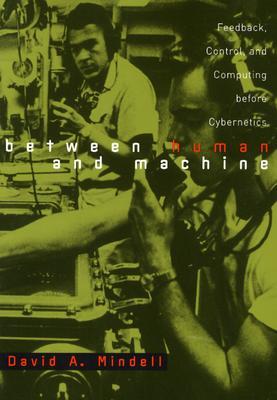Miller Medina, Jessica Eden: Designing Freedom, Regulating a Nation: Socialist Cybernetics in Allende’s Chile (2006)
Filed under paper, thesis | Tags: · 1970s, chile, cybernetics, cybersyn, machine, networks, socialism
Abstract
This article presents a history of ‘Project Cybersyn’, an early computer network developed in Chile during the socialist presidency of Salvador Allende (1970–1973) to regulate the growing social property area and manage the transition of Chile’s economy from capitalism to socialism. Under the guidance of British cybernetician Stafford Beer, often lauded as the ‘ father of management cybernetics ’, an interdisciplinary Chilean team designed cybernetic models of factories within the nationalised sector and created a network for the rapid transmission of economic data between the government and the factory floor. The article describes the construction of this unorthodox system, examines how its structure reflected the socialist ideology of the Allende government, and documents the contributions of this technology to the Allende administration.
Published in Journal of Latin American Studies 38, pp. 571–606, Cambridge University Press, 2006
PDF
Related: Eden Medina: Cybernetic Revolutionaries: Technology and Politics in Allende’s Chile (2011)
Related: The State Machine: Politics, Ideology, and Computation in Chile, 1964-1973 (Dissertation thesis, by Medina and Eden, 2005, PDF)
David A. Mindell: Between Human and Machine: Feedback, Control, and Computing before Cybernetics (2002)
Filed under book | Tags: · computing, cybernetics, engineering, history of computing, history of technology, industry, information theory, machine, military, networks, noise, science, technology, telephone

Today, we associate the relationship between feedback, control, and computing with Norbert Wiener’s 1948 formulation of cybernetics. But the theoretical and practical foundations for cybernetics, control engineering, and digital computing were laid earlier, between the two world wars. In Between Human and Machine: Feedback, Control, and Computing before Cybernetics, David A. Mindell shows how the modern sciences of systems emerged from disparate engineering cultures and their convergence during World War II.
Mindell examines four different arenas of control systems research in the United States between the world wars: naval fire control, the Sperry Gyroscope Company, the Bell Telephone Laboratories, and Vannevar Bush’s laboratory at MIT. Each of these institutional sites had unique technical problems, organizational imperatives, and working environments, and each fostered a distinct engineering culture. Each also developed technologies to represent the world in a machine.
At the beginning of World War II, President Roosevelt established the National Defense Research Committee, one division of which was devoted to control systems. Mindell shows how the NDRC brought together representatives from the four pre-war engineering cultures, and how its projects synthesized conceptions of control, communications, and computing. By the time Wiener articulated his vision, these ideas were already suffusing through engineering. They would profoundly influence the digital world.
As a new way to conceptualize the history of computing, this book will be of great interest to historians of science, technology, and culture, as well as computer scientists and theorists.
Publisher Johns Hopkins University Press, 2002
ISBN 0801868955, 9780801868955
439 pages
Mindell’s lecture about the book at MIT (video, 78 min, 2002)
Review (Larry Owens, History of Science and Technology)
Download (removed on 2014-9-18 upon request of the author)
Comment (1)Slava Gerovitch: From Newspeak to Cyberspeak: A History of Soviet Cybernetics (2004)
Filed under book | Tags: · computing, cybernetics, history of computing, history of science, history of technology, soviet union, technology

“In this book, Slava Gerovitch argues that Soviet cybernetics was not just an intellectual trend but a social movement for radical reform in science and society as a whole. Followers of cybernetics viewed computer simulation as a universal method of problem solving and the language of cybernetics as a language of objectivity and truth. With this new objectivity, they challenged the existing order of things in economics and politics as well as in science.
The history of Soviet cybernetics followed a curious arc. In the 1950s it was labeled a reactionary pseudoscience and a weapon of imperialist ideology. With the arrival of Khrushchev’s political “thaw,” however, it was seen as an innocent victim of political oppression, and it evolved into a movement for radical reform of the Stalinist system of science. In the early 1960s it was hailed as “science in the service of communism,” but by the end of the decade it had turned into a shallow fashionable trend. Using extensive new archival materials, Gerovitch argues that these fluctuating attitudes reflected profound changes in scientific language and research methodology across disciplines, in power relations within the scientific community, and in the political role of scientists and engineers in Soviet society. His detailed analysis of scientific discourse shows how the Newspeak of the late Stalinist period and the Cyberspeak that challenged it eventually blended into “CyberNewspeak.””
Published by MIT Press, 2004
ISBN 0262572257, 9780262572255
383 pages
Key terms:
newspeak, Norbert Wiener, dialectical materialism, Soviet Union, machine translation, Moscow University, John von Neumann, structural linguistics, Stalin, Stalinist, information theory, Roman Jakobson, servomechanisms, Andrei Markov, Cold War, Andrei Kolmogorov, Liapunov, entropy, Pavlovian, BESM
PDF (updated on 2017-10-25)
Comment (1)
